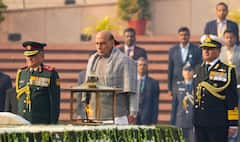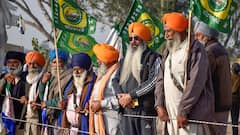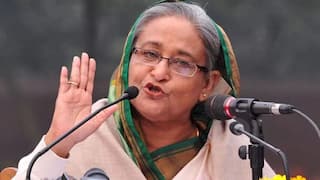‘1020 Females Per 1000 Males In India,’ Says MoS Health Affirming India’s Improved Child Sex Ratio
Among the 18 states covered in this phase, Goa had the lowest child sex ratio of 774 while Mizoram logged the highest child sex ratio of 1,007.

New Delhi: According to the fifth round of the National Family Health Survey (NFHS), there were an estimated 1020 females per 1000 males in the country between the ages of 0 and 6. In a written reply in the Lok Sabha, Union Minister of State for Health and Family Welfare, Bharati Praveen Pawar said, “"As per the fifth round of the National Family Health Survey (2019-21), the sex ratio of the population (females per 1000 males) for the country was estimated as 1022."
As per the official press release by the Ministry of Health and Family Welfare, 18 states were covered in this phase of the survey. Among the states covered, Goa had the lowest child sex ratio of 774 while Mizoram logged the highest child sex ratio of 1,007. It further stated that no such report was available for the Union Territories, whereas a report on states covered in the Phase-II of the survey was yet to be released.
As per the fifth round of the National Family Health Survey (2019-21), the sex ratio of the population (females per 1000 males) for the country was estimated as 1020: MoS Health, Dr. Bharati Pravin Pawar stated in a written reply in the Lok Sabha
— ANI (@ANI) December 17, 2021
The Minister attributed the Beti Bachao Beti Padhao scheme for the increase in the sex ratio of the country. “"The key elements of the scheme include nation-wide media and advocacy campaigns and multi-sectoral interventions in some districts. Intermediary target i.e., Sex Ratio at Birth has been set as a monitoring parameter for the progress of the scheme," Pawar said.
ALSO READ: CCI Suspends Amazon's 2019 Deal With Future Coupons, Imposes Rs 200 Crore Penalty
She added that the Beti Bachao Beti Padhao scheme aimed at addressing the declining child sex ratio issues regarding empowerment of girls and women over a life cycle. "The primary objectives of the scheme are to prevent gender-biased sex selective elimination, to ensure survival and protection of the girl child and to ensure education and participation of the girl child," she added.
According to the NFHS 4 that took place in the year 2015-16, the child sex ratio was at 919 per 1000 males.
Trending News
Top Headlines






































